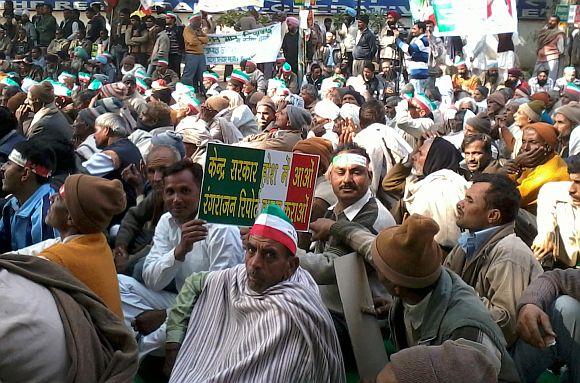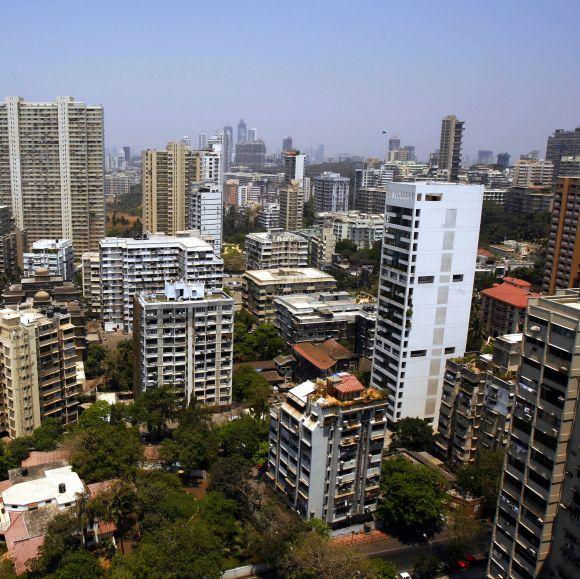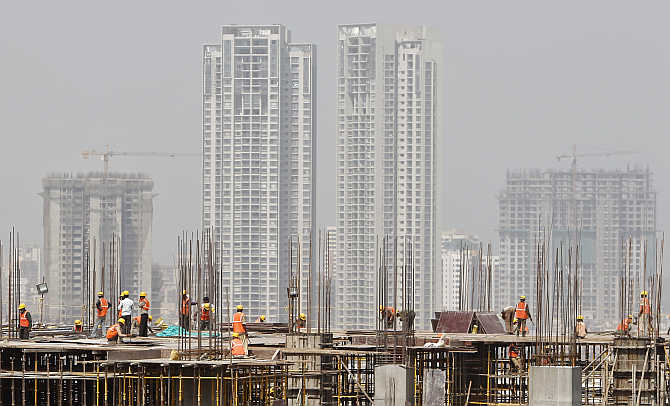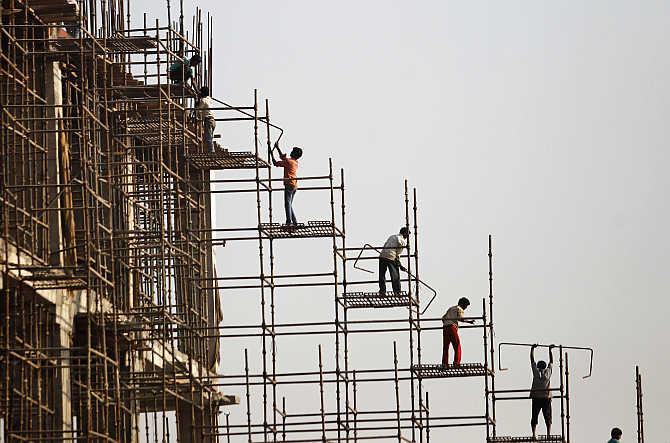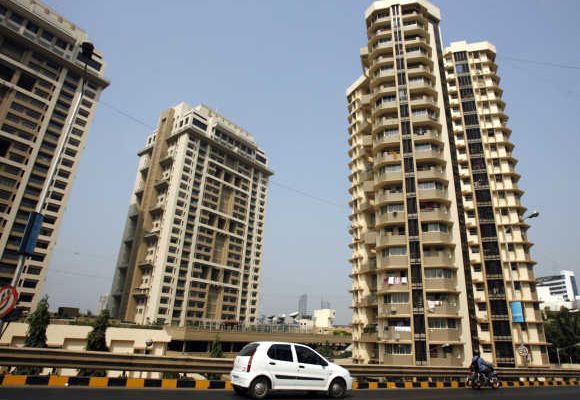 | « Back to article | Print this article |
Realty check: Boon for farmers or a stumbling block
Land disputes have been at the centre of controversies and social unrest during the United Progressive Alliance’s second term in office, and the verdict is mixed about a law to make land acquisition less contentious.
The Act is a reform measure for some but others look at it as a stumbling block for projects.
The critics believe the process of land acquisition will become so complex and time-consuming because of the consent and compensation provisions in the new law that projects will be hard to execute.
But those in favour of the new law cite a farmers’ agitation in Noida against unfair land acquisition methods of builders and the government as among the reasons why the Act is significant.
Click NEXT to read further. . .
Realty check: Boon for farmers or a stumbling block
The farmers’ agitation, spread over months, had halted construction and delayed supply of thousands of residential units in the area.
Also, as Vishwas Udgirkar, senior director (transport and infrastructure), Deloitte Consulting, points out, delay in infrastructure projects due to absence of firm land policies in the past has been a constant complaint by industry.
In that scenario, a law on land acquisition and compensation is welcome.Revelations on land deals in Haryana involving Sonia Gandhi’s son-in-law Robert Vadra, too, had raised questions on mutation rules and valuation.
Even so, a bureaucrat terms the new law ‘misdirected generosity’ that may make projects involving land hard to implement.
Yet another view is ‘it took too long to come’.
While the law could brighten the report card of the UPA government, it is too late to show results, he adds.
Click NEXT to read further. . .
Realty check: Boon for farmers or a stumbling block
Sachin Sandhir, managing director, Royal Institute of Chartered Surveyors (South Asia), is among those who back the Land Acquisition Act.
“The new Act will be the guiding principle for all land acquisition by the central and the state governments.
“The Act brings in stricter norms and increases the compensation to displaced landowners significantly,” says Sandhir. Indirectly, the new Act sets a course of reforms through a policy framework for rehabilitation and resettlement, too, he adds.
But, according to Sandhir, there are gaps in the law.
“The salient feature of the Act provides for compensation as high as four times the market value in rural areas and two times in urban areas.” This, he says, will impact property pricing.
Click NEXT to read further. . .
Realty check: Boon for farmers or a stumbling block
Also, developers acquiring land for projects will need the consent of up to 80 per cent of the people whose land is acquired for private projects and of 70 per cent of the landowners in the case of public-private partnership projects.
“The consent clause will also add to the delay of projects. A country that is already battling problems of policy impediments and regulatory bottlenecks at the time of project approvals might not get enough support from the new Act,” says Sandhir.
The time consumed in getting the consent will simply add to the long approval process.
In fact, just after the Land Bill was passed in Parliament last year, analysts had seen it as a positive and transparent move by the government.
Click NEXT to read further. . .
Realty check: Boon for farmers or a stumbling block
Speaking about subdued home-buyer sentiment, Anshuman Magazine, chairman and managing director, South Asia, CBRE, a real estate consultancy, had said the land Acquisition Act was expected to improve transparency and the investment climate in India.
Another analyst, Sanjay Dutt, executive MD, South Asia, Cushman and Wakefield, had stated, “The implementation of various reform measures like the Right to Fair Compensation and Transparency in Land Acquisition, Rehabilitation and Resettlement Act, 2013, and the proposed Real Estate (Regulation and Development) Bill, 2013, will see increased participation from all stakeholders like the government, developers, real estate service providers, and investors alike.”
Click NEXT to read further. . .
Realty check: Boon for farmers or a stumbling block
The law, to provide just and fair compensation to farmers, which was passed during the monsoon session of Parliament, came into force from 2014.
The complexity of the new law was not missed by the government.
Rural development minister Jairam Ramesh had then said a permanent advisory committee, consisting of all stakeholders, including land-owners, civil society and industry, was envisaged to review implementation of the law.
He also announced that the government would identify wasteland and barren tracts through the National Remote Sensing Agency and make this information available for public use.
According to Ramesh, the new Act was based on four main components: consent of landowners, compensation, resettlement and rehabilitation and procedures.
Click NEXT to read further. . .
Realty check: Boon for farmers or a stumbling block
The law requires the consent of 80 per cent of land-losers in cases of acquisition by the government for private companies and 70 per cent in case of public-private partnership projects.
The compensation will be based on circle rates as well as the average of top prices for proximate land parcels of the last three years, whichever is higher.
The law also states that no one shall be dispossessed unless all payments are made and alternate sites for resettlement and rehabilitation have been prepared.
It prohibits the acquisition of land in scheduled areas without the consent of the rural authorities, or ‘gram sabhas’.
The new law is expected to bring down legal complications and grievances related to land acquisition, but an increase in land-related costs could make projects much more expensive.
And the consent clause could delay the time taken in executing projects.
Click NEXT to read further. . .
